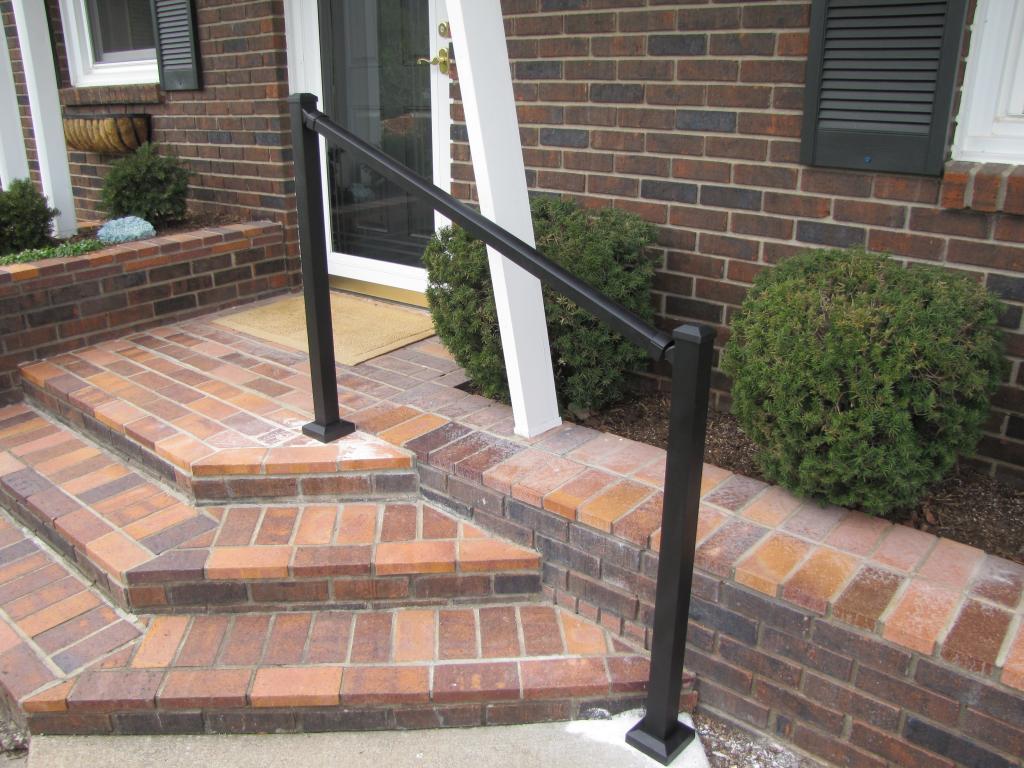AHD Blog
Handrail Load Requirements
Handrails are a key safety feature of nearly every multi-level structure. Like most safety elements, handrails are regulated by international codes – specifically, the International Residential Code (IRC) and the International Building Code (IBC). These codes dictate important safety features for residential and commercial properties, including handrail load requirements. While straightforward, these codes can be confusing for those not directly involved in the construction industry. Not sure how to move forward when it comes to handrail load requirements? We dove into the most recent IRC and IBC guidelines and outlined the highlights.
Handrail Load Requirements
General Handrails and Guard Requirements
The most recent IBC guidelines outline updated handrail load requirements for both businesses and residential properties. According to the 2018 guidelines, handrails must resist a linear load of 50 pounds per linear foot (plf) in accordance with Section 4.5.1 of ASCE (American Society of Civil Engineers). The codes certainly contain a lot of acronyms to remember. However, working with a professional on your handrail installation will help you keep the codes straight.
Concentrated and Intermediate Loads
According to the most recent IBC guidelines, handrails and guards must be able to resist a concentrated load of 200 pounds. That means that handrails should be able to withstand a 200-pound load applied in a downward direction within two inches of the top edge of the top rail. Intermediate rails are also something to consider. IBC guidelines also describe “intermediate rails” as all rails except the actual handrail – for example, support rails. The guidelines explain that intermediate rails must be able to resist a concentrated load of 50 pounds.
Residential Rails
One- and two-family dwellings are dictated by both IBC guidelines and IRC guidelines. According to the most recent IRC guidelines, areas that are not accessible to the general public only need to withstand up to 20 pounds per foot. That standard applies for buildings with occupant loads of less than 50 people.
Miscellaneous Handrails
IBC and IRC guidelines are extremely thorough, covering everything from residential stairway rails to bathroom rails in businesses. There are a few other miscellaneous handrail standards outlined in these codes, including those for grab bars, shower seats, and dressing room bench seats. IBC standards mandate that these rails must resist a concentrated load of 250 pounds applied in any direction at any point on the rail’s surface.
Selecting Durable Handrail Materials
Reviewing handrail load requirements will give you a better idea of materials for your project. Once you’re comfortable with the requirements, ask yourself a few questions. For example, will the handrail be located indoors or outdoors? If it’s outdoors, how will it hold up against weather? Ultimately, you’ll want to select materials that will maintain their appearance and load-bearing capabilities for years to come.
_____
Handrail load requirements can be confusing, but with the help of a professional, you’ll quickly crack the codes. Before you get started, make sure to identify your local building codes. Confirm all code requirements with local authorities, who may not have updated local requirements to comply with the most recent IBC and IRC standards.
Looking for an expert to walk you through handrail load requirements? Look no further than Aluminum Handrail Direct. We offer high-quality, maintenance-free aluminum handrails and accessories. All Aluminum Handrail Direct products offer a lifetime limited warranty against defects in workmanship. We also exclusively use materials that, in the course of normal and proper use, won’t crack, peel, blister, flake, rust, or be subject to abnormal weathering. With more than 15 years of experience in the industry, we can help you choose the right railings for your project. We’ll even ship your handrails directly to you to make your building process as easy as possible. For more information, give us a call at 417-409-3179.


